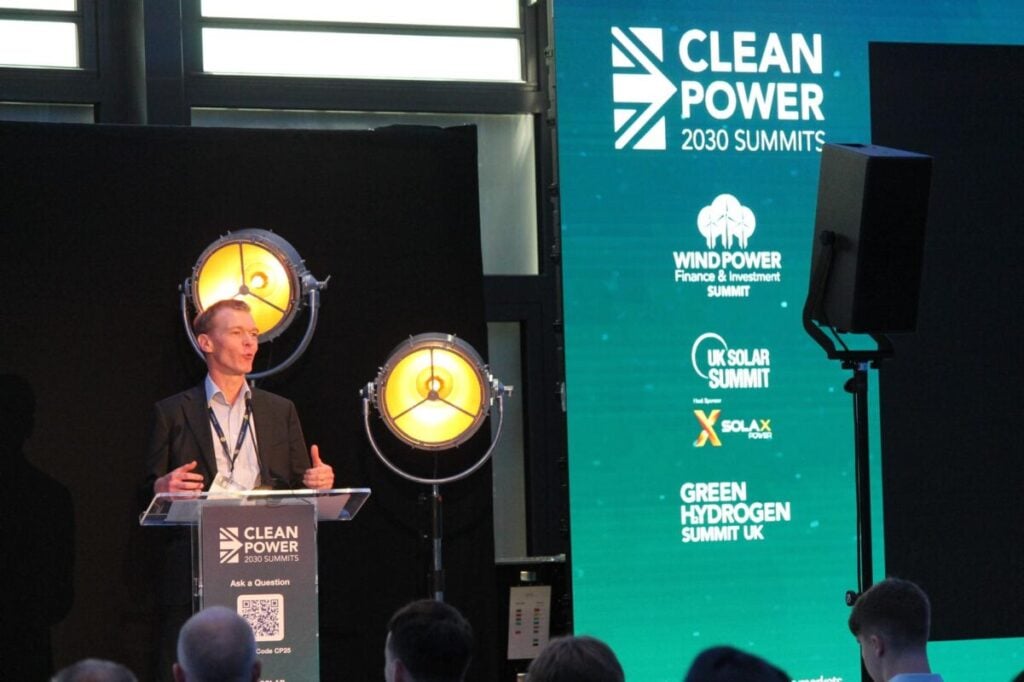
Ofgem has given the provisional green light to an initial £24 billion investment programme to enable the transmission of clean energy from renewable sources.
“At the heart of today’s announcement is the need to upgrade our electricity network […] we’ve approved the network companies to move forward with all the remaining electricity transmission projects identified by NESO as needed for meeting the clean power 2030 plan,” said Neil Kenward, director for strategy, economics, research and net zero at Ofgem.
Kenward spoke this morning (1 July) at Solar Media’s Clean Power 2030 Summits, just after news broke that Ofgem has published its draft framework for electricity and gas transmission and gas distribution price controls for the next period, which will run for five years from April 2026 to March 2031.
The RIIO-3 price control offers network companies incentives for innovation and securing investment so that they can develop sustainable energy networks at the lowest cost for current and future customers.
Kenward said Ofgem expects capital investment over the RIIO-3 period of up to £80 billion, a fourfold increase on current investment levels. “This funding will finance the building of new power lines, substations and cables on land and at sea, significantly increasing the grid’s ability to connect and transport the growing share of GB electricity coming from renewable sources.”
An initial £8.9 billion investment is being committed to the high-voltage electricity network as the first step in the £80 billion investment programme described by Kenward.
According to Ofgem’s announcement, the fourfold growth in investment will allow for 80 transmission projects to be completed by 2031 that will upgrade over 4400km of overhead lines and deliver 3500km of new circuits. The energy regulator states that this will mean up to 126GW of clean power generation will be connected to the grid by 2030 alongside additional flexible storage and technologies.
Keeping consumer cost low
“The case for these investments in both gas and electricity networks is compelling, but this must be done at least cost to consumers,” Kenward said this morning, adding, “we have applied a rigorous approach to test company plans, cutting out more than three billion pounds of proposed spend, ensuring costs are well justified and efficient while setting strong incentives and accountabilities for projects to be delivered on time and on budget.”
Still, he acknowledged that even under the RIIO-3 framework, the expected increase in network costs over the five years of the price control is significant, which Ofgem recognises will be “a challenge” to energy consumers.
As a result, Kenward said, “it’s important note that the investment in the electricity grid more than pays for itself.”
“The increased grid capacity will save billions of pounds a year, reducing the interventions the system operator has to make to turn off surplus generation stuck behind network constraints.
“By connecting more renewable projects to the grid, the investment will also facilitate reductions in the wholesale price.”
Taking into account these savings, the net addition to household bills to support the £80 million investment in the transmission network will be just £20 “for a more secure, clean energy system.”

